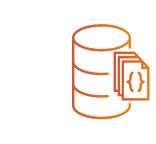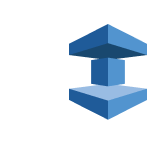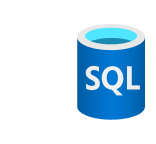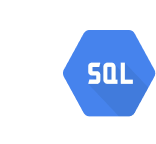Why Financial Institutions Migrate Data
Legacy systems are dragging them down
Most migrations start because something old is now a blocker. Aging infrastructure no one wants to maintain, systems only one person understands (who just resigned), workarounds piled on top of workarounds. Eventually, the cost of not migrating becomes high.
Compliance doesn’t wait
New regulations show up, and old systems cannot cope. GDPR, SOX, PCI, local data residency rules. New audit requirements needing better lineage, access logs, encryption. If your platform cannot prove control, migration becomes the only way to stay in business.
M&A forces the issue
When banks merge or acquire, they inherit conflicting data structures, duplicate records, fragmented customer views. The only path forward is consolidation. You cannot serve a unified business on mismatched backends.
Customer expectations got ahead of tech
Customers want mobile-first services, real-time transactions and personalized insights.
Legacy systems can’t provide that. They weren’t designed to talk to mobile apps, stream real-time data, or support ML-powered anything.
Analytics and AI hit a wall
You can’t do real analytics if your data is trapped in ten different systems, full of gaps and duplicates, updated nightly via broken ETL jobs.
Modern data platforms solve this. Migrations aim to centralize, clean, and connect data.
Cost pressure from the board
Everyone says "cloud saves money." That’s only half true. If you’re running old on-premises systems with physical data centers, licenses, no elasticity or automation …then yes, the CFO sees migration as a way to cut spending. However, smart teams don’t migrate for savings alone. They migrate to stop paying for dysfunction.
Business wants agility. IT can’t deliver
When the business says "launch a new product next quarter," and IT says "that will take 8 months because of system X," migration becomes a strategy conversation.
Cloud-native platforms, modern APIs, and scalable infrastructure are enablers. But you can’t bolt them onto a fossil.
Core system upgrades that can’t wait anymore
This is the "we’ve waited long enough" scenario. A core banking system that can’t scale. A data warehouse from 2007. A finance platform with no support.
It’s not a transformation project. It’s triage. You migrate because staying put means stagnation, or worse, failure, during a critical event.
We combine automated tools and manual checks to find hidden risks early before they become problems through a discovery process, whether you’re consolidating systems or moving to the cloud.
Database Migration Strategy
Start by figuring out what you really have
Inventory is what prevents a disaster later. Every system, every scheduled job, every API hook: it all needs to be accounted for.
Yes, tools like Alation, Collibra, and Apache Atlas can speed it up, but they only show what is visible. The real blockers are always the things nobody flagged: Excel files with live connections, undocumented views, or internal tools with hard-coded credentials. Discovery is slow, but skipping it just means fixing production issues after cutover.
Clean the data before you move it
Bad data will survive the migration if you let it. Deduplication, classification, and data profiling must be done before the first trial run.
Use whatever makes sense: Data Ladder, Spirion, Varonis. The tooling is not the hard part. The problem is always legacy data that does not fit the new model. Data that was fine when written is now inconsistent, partial, or unstructured. You cannot automate around that. You clean it, or you carry it forward.
Make a real call on the strategy - not just the label
Do not pick a migration method because a vendor recommends it.
Big Bang works, but only if rollback is clean and the system is small enough that a short outage is acceptable. It fails hard if surprises show up mid-cutover.
Phased is safer in complex environments where dependencies are well-mapped and rollout can be controlled. It adds overhead, but gives room to validate after each stage.
Parallel (or pilot) makes sense when confidence is low and validation is a high-priority. You run both systems in sync and check results before switching over. It is resource-heavy, you are doubling effort temporarily, but it removes guesswork.
Hybrid is a middle ground. Not always a cop-out, it can be deliberate, like migrating reference data first, then transactions. But it requires real planning, not just optimism.
Incremental (trickle) migration is useful when zero downtime is required. You move data continuously in small pieces, with live sync. This works, but adds complexity around consistency, cutover logic, and dual writes. It only makes sense if the timeline is long.
Strategy should reflect risk, not ambition. Moving a data warehouse is not the same as migrating a trading system. Choose based on what happens when something fails.
Pilot migrations only matter if they are uncomfortable
Run a subset through the full stack. Use masked data if needed, but match production volume. Break the process early.
Most failures do not come from the bulk load. They come from data mismatches, dropped fields, schema conflicts, or edge cases the dev team did not flag. Pilot migrations are there to surface those, not to "prove readiness."
The runbook is a plan, not a document
If people are confused during execution, the runbook fails. It should say who does what, when, and what happens if it fails.
All experts emphasize execution structure: defined rollback triggers, reconciliation scripts, hour-by-hour steps with timing buffers, a plan B that someone has actually tested.
Do not rely on project managers to fill in gaps mid-flight. That is how migrations end up in the postmortem deck.
Validation is part of the job, not the cleanup
If you are validating data after the system goes live, you are already late. The validation logic must be scripted, repeatable, and integrated, not just "spot checked" by QA.
This includes row counts, hashing, field-by-field matching, downstream application testing, and business-side confirmation that outputs are still trusted.
Regression testing is the only way to tell if you broke something.
Tools are fine, but they are not a strategy
Yes, use DMS, Azure Data Factory, Informatica, Google DMS, SchemaSpy, etc. Just do not mistake that for planning.
All of these tools fail quietly when misconfigured. They help only if the underlying migration plan is already clear, especially around transformation rules, sequence logic, and rollback strategy. The more you automate, the more you need to trust that your input logic is correct.
Keep security and governance running in parallel
Security is not post-migration cleanup. It is active throughout.
Access must be scoped to migration-only roles
PII must be masked in all non-prod runs
Logging must be persistent and immutable
Compliance checkpoints must be scheduled, not reactive
Data lineage must be maintained, especially during partial cutovers
This is not a regulatory overhead. These controls prevent downstream chaos when audit, finance, or support teams find data inconsistencies.
Post-cutover is when you find what you missed
No matter how well you planned, something will break under load: indexes will need tuning, latency will spike, some data will have landed wrong, even with validation in place, reconciliations will fail in edge cases and users will see mismatches between systems.
You need active monitoring and fast intervention windows. That includes support coverage, open escalation channels, and pre-approved rollback windows for post-live fixes.
Compliance, Risk, and Security During Migration
Data migrations in finance are high-risk by default. Regulations do not pause during system changes. If a dataset is mishandled, access is left open, records go missing, the legal and financial exposure is immediate. Morgan Stanley was fined after failing to wipe disks post-migration. TSB’s failed core migration led to outages, regulatory fines, and a permanent hit to customer trust.
Security and compliance are not post-migration concerns. They must be integrated from the first planning session.
Regulatory pressure is increasing
The EU’s DORA regulation, SEC cyber disclosure rules, and ongoing updates to GDPR, SOX, and PCI DSS raise the bar for how data is secured and governed.
Financial institutions are expected to show not just intent, but proof: encryption in transit and at rest, access logs, audit trails, and evidence that sensitive data was never exposed, even in testing.
Tools like Data Ladder, Spirion, and Varonis track PII, verify addresses, and ensure that only necessary data is moved. Dynamic masking is expected when production data is copied into lower environments. Logging must be immutable. Governance must be embedded.
Strategy choice directly affects your exposure
The reason phased, parallel, or incremental migrations are used in finance has nothing to do with personal preference - it is about control. These strategies buy you space to validate, recover, and prove compliance while the system is still under supervision.
Parallel systems let you check both outputs in real time. You see immediately if transactional records or balances do not match, and you have time to fix it before going live. Incremental migrations, with near-real-time sync, give you the option to monitor how well data moves, how consistently it lands, and how safely it can be cut over - without needing full downtime or heavy rollback.
The point is not convenience. It is audit coverage. It is SLA protection. It is a legal defense. How you migrate determines how exposed you are to regulators, to customers, and to your own legal team when something goes wrong, and the logs get pulled.
Security applies before, during, and after the move
Data is not less sensitive just because it is moving. Testing environments are not immune to audit. Encryption is not optional - and access controls do not get a break.
This means:
Everything in transit is encrypted (TLS minimum)
Storage must use strong encryption (AES-256 or equivalent)
Access must be restricted by role, time-limited, logged, and reviewed
Temporary credentials are created for migration phases only
Any non-production environment gets masked data, not copies
Belitsoft builds these controls into the migration path from the beginning - not as hardening after the fact. Access is scoped. Data is verified. Transfers are validated using hashes. There is no blind copy-and-paste between systems. Every step is logged and reversible.
The principle is simple: do not treat migration data any differently than production data. It will not matter to regulators that it was "temporary" if it was also exposed.
Rely on Belitsoft’s database migration engineers and data governance specialists to embed security, compliance, and auditability into every phase of your migration. We ensure your data remains protected, your operations stay uninterrupted, and your migration meets the highest regulatory standards.
Reconciliation is the compliance checkpoint
Regulators do not care that the migration was technically successful. They care whether the balances match, the records are complete, and nothing was lost or altered without explanation.
Multiple sources emphasize the importance of field-level reconciliation, automated validation scripts, and audit-ready reports. During a multi-billion-record migration, your system should generate hundreds of real-time reconciliation reports. The mismatch rate should be in the double digits, not thousands, to prove that validation is baked into the process.
Downtime and fallback are also compliance concerns
Compliance includes operational continuity. If the system goes down during migration, customer access, trading, or payment flows can be interrupted. That triggers not just customer complaints, but SLA penalties, reputational risk, and regulator involvement.
Several strategies are used to mitigate this:
Maintaining parallel systems as fallback
Scheduling cutovers during off-hours with tested recovery plans
Keeping old systems in read-only mode post-cutover
Practicing rollback in staging
Governance must be present, not implied
Regulators expect to see governance in action, not in policy, but in tooling and workflow:
Data lineage tracking
Governance workflows for approvals and overrides
Real-time alerting for access anomalies
Escalation paths for risk events
Governance is not a separate track, it is built into the migration execution. Data migration teams do this as standard. Internal teams must match that discipline if they want to avoid regulatory scrutiny.
No margin for "close enough"
In financial migrations, there is no tolerance for partial compliance. You either maintained data integrity, access control, and legal retention, or you failed.
Many case studies highlight the same elements:
Drill for failure before go-live
Reconcile at every step, not just at the end
Encrypt everything, including backups and intermediate outputs
Mask what you copy
Log everything, then check the logs
Anything less than that leaves a gap that regulators, or customers, will eventually notice.
Database Migration Tools
There is no single toolset for financial data migration. The stack shifts based on the systems involved, the state of the data, and how well the organization understands its own environment. Everyone wants a "platform" - what you get is a mix of open-source utilities, cloud-native services, vendor add-ons, and custom scripts taped together by the people who have to make it work.
Discovery starts with catalogs
Cataloging platforms like Alation, Collibra, and Apache Atlas help at the front. They give you visibility into data lineage, orphaned flows, and systems nobody thought were still running. But they’re only as good as what is registered. In every real migration, someone finds an undocumented Excel macro feeding critical reports. The tools help, but discovery still requires manual effort, especially when legacy platforms are undocumented.
API surfaces get mapped separately. Teams usually rely on Postman or internal tools to enumerate endpoints, check integrations, and verify that contract mismatches won’t blow up downstream. If APIs are involved in the migration path, especially during partial cutovers or phased releases, this mapping happens early and gets reviewed constantly.
Cleansing and preparation are where tools start to diverge
You do not run a full migration without profiling. Tools like Data Ladder, Spirion, and Varonis get used to identify PII, address inconsistencies, run deduplication, and flag records that need review. These aren’t perfect: large datasets often require custom scripts or sampling to avoid performance issues. But the tooling gives structure to the cleansing phase, especially in regulated environments.
If address verification or compliance flags are required, vendors like Data Ladder plug in early, especially in client record migrations where retention rules, formatting, or legal territories come into play.
Most of the transformation logic ends up in NiFi, scripts, or something internal
For format conversion and flow orchestration, Apache NiFi shows up often. It is used to move data across formats, route loads, and transform intermediate values. It is flexible enough to support hybrid environments, and visible enough to track where jobs break.
SchemaSpy is commonly used during analysis because most legacy databases do not have clean schema documentation. You need visibility into field names, relationships, and data types before you can map anything. SchemaSpy gives you just enough to start tracing, but most of the logic still comes from someone familiar with the actual application.
ETL tools show up once the mapping is complete. At this point, the tools depend on environment:
AWS DMS, Google Cloud DMS, and Azure Data Factory get used in cloud-first migrations.AWS Schema Conversion Tool (SCT) helps when moving from Oracle or SQL Server to something modern and open.
On-prem, SSIS still hangs around, especially when the dev team is already invested in it.
In custom environments, SQL scripts do most of the heavy lifting — especially for field-level reconciliation and row-by-row validation.
The tooling is functional, but it’s always tuned by hand.
Governance tooling
Platforms like Atlan promote unified control planes: metadata, access control, policy enforcement, all in one place. In theory, they give you a single view of governance. In practice, most companies have to bolt it on during migration, not before.
That’s where the idea of a metadata lake house shows up: a consolidated view of lineage, transformations, and access rules. It is useful, especially in complex environments, but only works if maintained. Gartner’s guidance around embedded automation (for tagging, quality rules, and access controls) shows up in some projects, but not most. You can automate governance, but someone still has to define what that means.
Migration engines
Migration engines control ETL flows, validate datasets, and give a dashboard view for real-time status and reconciliation. That kind of tooling matters when you are moving billions of rows under audit conditions.
AWS DMS and SCT show up more frequently in vendor-neutral projects, not because they are better, but because they support continuous replication, schema conversion, and zero-downtime scenarios. Google Cloud DMS and Azure Data Factory offer the same thing, just tied to their respective platforms.
If real-time sync is required, in trickle or parallel strategies, then Change Data Capture tooling is added. Some use database-native CDC. Others build their own with Kafka, Debezium, or internal pipelines.
Most validation is scripted. Most reconciliation is manual
Even in well-funded migrations, reconciliation rarely comes from off-the-shelf tools. Companies use hash checks, row counts, and custom SQL joins to verify that data landed correctly. In some cases, database migration companies build hundreds of reconciliation reports to validate a billion-record migration. No generic tool gives you that level of coverage out of the box.
Database migration vendors use internal frameworks. Their platforms support full validation and reconciliation tracking and their case studies cite reduced manual effort. Their approach is clearly script-heavy, format-flexible (CSV, XML, direct DB), and aimed at minimizing downtime.
The rest of the stack is coordination, not execution.
During cutover, you are using Teams, Slack, Jira, Google Docs, and RAID logs in a shared folder. The runbook sits in Confluence or SharePoint. Monitoring dashboards are built on Prometheus, Datadog, or whatever the organization already uses.
What a Serious Database Migration Vendor Brings (If They’re Worth Paying)
They ask the ugly questions upfront
Before anyone moves a byte, they ask, What breaks if this fails? Who owns the schema? Which downstream systems are undocumented? Do you actually know where all your PII is?
A real vendor runs a substance check first. If someone starts the engagement with "don’t worry, we’ve done this before," you’re already in danger.
They design the process around risk, not speed
You’re not migrating a blog. You’re moving financial records, customer identities, and possibly compliance exposure.
A real firm will:
Propose phased migration options, not a heroic "big bang" timeline
Recommend dual-run validation where it matters
Build rollback plans that actually work
Push for pre-migration rehearsal, not just “test in staging and pray”
They don’t promise zero downtime. They promise known risks with planned controls.
They own the ETL, schema mapping, and data validation logic
Real migration firms write:
Custom ETL scripts for edge cases (because tools alone never cover 100%)
Schema adapters when the target system doesn’t match the source
Data validation logic - checksums, record counts, field-level audits
They will not assume your data is clean. They will find and tell you when it’s not - and they’ll tell you what that means downstream.
They build the runbooks, playbooks, and sanity checks
This includes:
What to do if latency spikes mid-transfer
What to monitor during cutover
How to trace a single transaction if someone can’t find it post-migration
A go/no-go checklist the night before switch
The good ones build a real migration ops guide, not a pretty deck with arrows and logos, but a document people use at 2AM.
They deal with vendors, tools, and infrastructure, so you don’t have to
They don’t just say "we’ll use AWS DMS." They provision it, configure it, test it, monitor it, and throw it away clean.
If your organization is multi-cloud or has compliance constraints (data residency, encryption keys, etc.), they don’t guess; they pull the policies and build around them.
They talk to your compliance team like adults
Real vendors know:
What GDPR, SOX, PCI actually require
How to write access logs that hold up in an audit
How to handle staging data without breaking laws
How to prepare regulator notification packets if needed
They bring technical project managers who can speak of "risk", not just "schema."
So, What You’re Really Hiring
You’re not hiring engineers to move data. You’re hiring process maturity, disaster recovery modeling, DevOps with guardrails and legal fluency.
With 20+ years of database development and modernization expertise, Belitsoft owns the full technical execution of your migration - from building custom ETL pipelines to validating every transformation across formats and platforms. Contact our experts to get a secure transition, uninterrupted operations, and a future-proof data foundation aligned with the highest regulatory standards.
Alexander Suhov
•
13
min read


























































.jpg)
.jpg)
.jpg)
















We have been working for over 10 years and they have become our long-term technology partner. Any software development, programming, or design needs we have had, Belitsoft company has always been able to handle this for us.
Founder from ZensAI (Microsoft)/ formerly Elearningforce